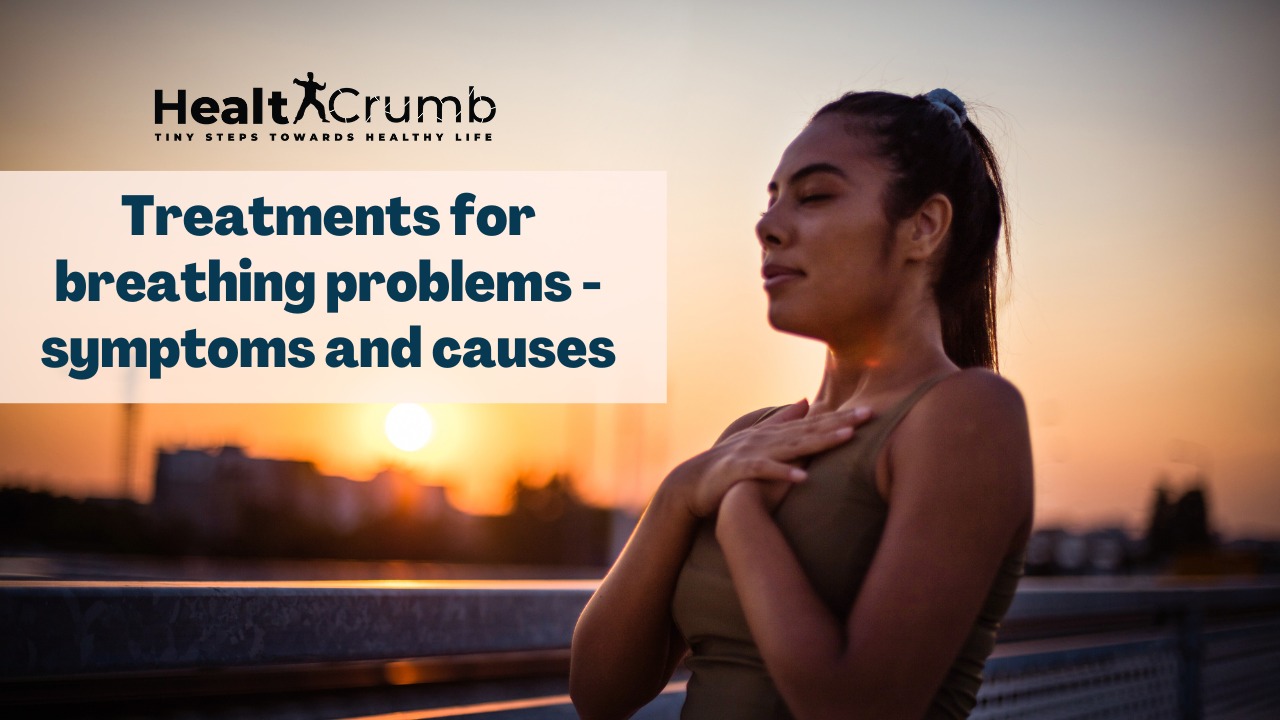Introduction
Do you suffer from breathing problems? If so, you’re not alone. According to the World Health Organization, nearly 3 million people die each year from respiratory diseases. There are many different types of breathing problems, and even more potential causes. In this blog post, we will explore some of the most common treatments for breathing problems, as well as their symptoms and causes. Read on for more information about how to find relief.
What exactly are breathing problems?
There are many different types of breathing problems, and each one has its own set of symptoms and causes. The most common type of breathing problem is asthma, which is a chronic condition that causes the airways to become inflamed and narrowed. Other common types include bronchitis, COPD (chronic obstructive pulmonary disease), and emphysema.
Symptoms of breathing problems can vary depending on the type of problem, but may include shortness of breath, wheezing, coughing, and chest tightness. Causes can also vary, but may include allergies, infections, smoking, and exposure to environmental pollutants.
Breathing problems can vary in severity, from mild to life-threatening. They can be caused by a number of different conditions, including allergies, asthma, COPD, and heart failure. Symptoms include shortness of breath, wheezing, coughing, and difficulty breathing.
There are a number of different treatments for breathing problems, depending on the underlying cause. Allergy sufferers may benefit from allergy shots or oral medication. Asthma sufferers may need to use an inhaler or nebulizer to deliver medication directly to the lungs. COPD patients may require oxygen therapy or pulmonary rehabilitation. Heart failure patients may need medication to improve heart function or surgery to repair damaged heart tissue.
What are the symptoms of breathing problems?
Breathing problems can manifest in a variety of ways, and the symptoms can vary depending on the underlying cause. Many breathing difficulties are characterized by shortness of breath, but other common symptoms include wheezing, chest pain, and difficulty catching your breath.
The most common symptom of breathing difficulties is shortness of breath. This can be accompanied by other symptoms such as:
- Chest pain or tightness: If you feel tightening in your chest accompanied by shortness of breath, it may be a symptom that you are prone to breathing problems.
- Wheezing: When your airway is partially closed, you may hear a sharp whistle or rough rattling. This sound is called wheezing. Your airway could be clogged as a result of allergies, bronchitis, a cold, or an allergic reaction.
- A feeling of suffocation: If you feel like you’re suffocating, it may be a sign that you’re out of breath and that you may have breathing problems.
- Rapid breathing: Rapid breathing is also a sign of breathing problem. This usually happens when you walk over steep areas or climb stairs. If you face this symptom, it is important that you see a doctor as soon as possible.
- Difficulty speaking or catching your breath: Shortness or breath accompanied with difficulty speaking or catching your breath after a long walk or workout might just be another sign that yiu may have breathing problems.
- A bluish tinge to the skin: If your skin appears to have a blue tinge, it may be a sign that your body is not getting enough oxygen. This is a medical emergency and you should seek medical help immediately.
If you feel like you’ve experienced any of these symptoms, make sure to see a doctor as soon as possible. They will be able to diagnose the cause of your breathing difficulties and recommend the best course of treatment.
There are many potential causes of breathing difficulties. Some of the more common ones include asthma, emphysema, and chronic bronchitis. These conditions are all chronic lung diseases that can make it hard to breathe. Other potential causes include heart failure, pneumonia, and COPD (chronic obstructive pulmonary disease). More causes of breathing problems are specified below.
What are the causes of breathing problems?
There are many potential causes of breathing problems, and the specific cause will determine the appropriate treatment. Common causes of breathing difficulties include asthma, COPD, bronchitis, pneumonia, and allergies. Less common causes include heart failure, lung cancer, and sleep apnea. Some respiratory infections can also cause difficulty breathing. If you have developed sudden onset shortness of breath, it could be a sign of a pulmonary embolism and you should seek medical attention immediately.
In general, breathing problems can be caused by anything that impairs the ability of the lungs to exchange oxygen and carbon dioxide. This can include conditions that cause inflammation or narrowing of the airways, increased mucus production, or fluid buildup in the lungs. It can also be caused by problems with the muscles that control breathing, or by damage to the nerves that carry signals from the brain to the muscles.
If you have chronic or recurring breathing problems, it is important to see your doctor to find out the underlying cause. Once the cause is determined, your doctor can develop a treatment plan to help you manage your symptoms and breathe more easily.
How can I treat my breathing problems?
If you’re experiencing breathing difficulties, the first step is to consult a doctor to rule out any potentially serious underlying causes. Once any serious conditions have been ruled out, there are a number of things you can do to help manage your breathing problems.
If you suffer from allergies or asthma, it’s important to keep your triggers under control. This may involve taking medication as prescribed, avoiding trigger foods or substances, and using an air purifier.
If you have COPD, quitting smoking is essential. Your doctor can also prescribe medication to help relieve symptoms.
There are a number of lifestyle changes that can help improve your breathing. These include exercising regularly, maintaining a healthy weight, and avoiding second-hand smoke.
In some cases, surgery may be necessary to treat breathing problems. However, this is usually only recommended for severe cases that haven’t responded to other treatment methods.
When should I see a doctor for my breathing problems?
If you are having trouble breathing, it is important to see a doctor as soon as possible. This is especially true if you are also experiencing chest pain, shortness of breath, or wheezing. These may be signs of a more serious problem, such as a heart attack or lung disease. If you have asthma, it is also important to see a doctor if your symptoms are not well controlled by medication.
There are a number of things that you can do to improve your breathing. These include:
- quitting smoking
- exercising regularly
- avoiding environmental irritants, such as dust or pollen
- using a humidifier to keep the air moist
Following all these health parameters will help you improve your breathing and reduce your chances of getting breathing problems.
Conclusion
Breathing problems can be caused by a number of different things, from allergies to asthma. However, there are treatments available that can help you manage your symptoms and improve your quality of life. If you’re struggling to breathe properly, talk to your doctor about the best treatment options for you. With the right care, you can get your breathing under control and enjoy a better quality of life.



